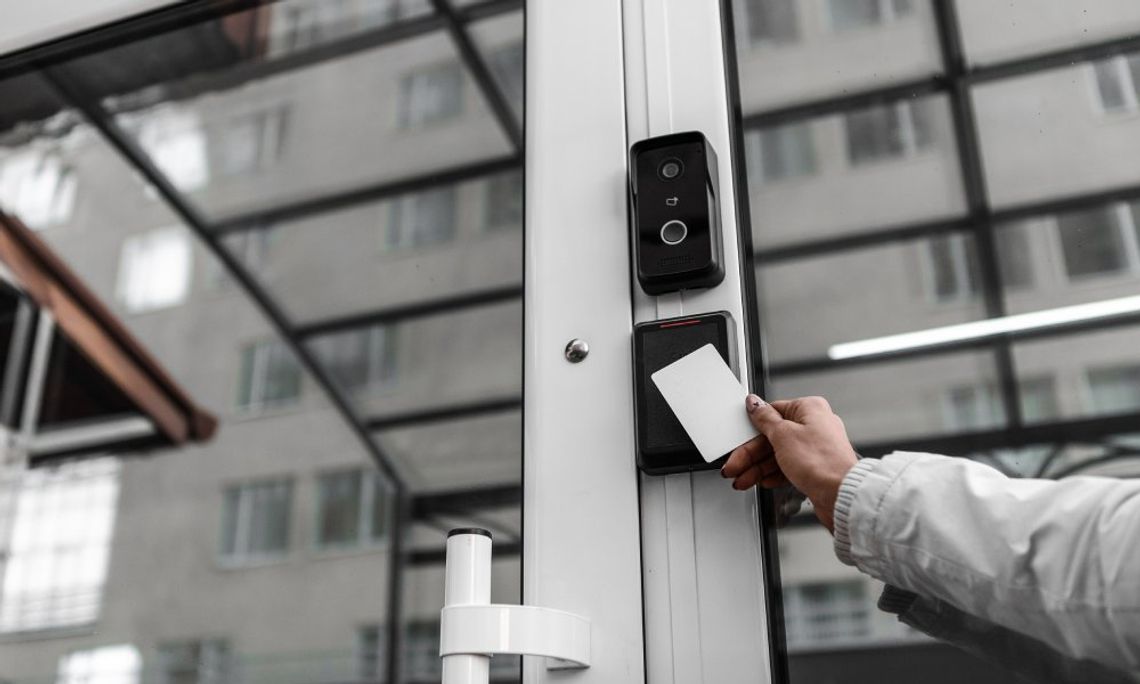Business owners know that protecting a commercial building isn’t just about locking doors or setting up traditional alarm systems anymore. With advances in technology, artificial intelligence (AI) has emerged as a game-changer in business building security.
By integrating AI, buildings have become safer, smarter, and more efficient at identifying and responding to potential threats. AI is improving business building security and we’re explaining how in this quick guide.
Enhanced Access Control Systems
AI and machine learning have become indispensable tools in modern access control systems. Businesses are now using AI to refine how employees, contractors, and visitors access secured areas. For instance, traditional keycard systems are being replaced with biometric solutions like facial recognition or fingerprint scanning, which are faster and more secure. Additionally, AI-powered platforms can adaptively learn user access patterns, flagging unusual activity in real time.
Imagine an employee enters the office building daily between 8 AM and 9 AM, but one day they attempt access at an unusual hour. AI systems can recognize this deviation and alert security teams instantly, reducing the possibility of unauthorized entry or insider threats.
Predictive Security and Proactive Threat Detection
AI excels at analyzing massive amounts of data and identifying irregularities far more efficiently than human security teams can manage on their own. Predictive AI systems analyze patterns and behaviors to forecast potential threats before they unfold.
For example, AI can monitor environmental data like temperature variations or chemical compositions to detect potential threats, such as fires or gas leaks, before they become emergencies. Similarly, machine learning algorithms study suspicious movement near restricted zones to determine high-risk situations and preemptively sound alarms. These predictive capabilities enable building managers to shift from a reactive to a proactive security approach, ensuring better preparation for incidents.
Advanced Surveillance and Monitoring
Surveillance cameras are a staple of building security, but traditional systems merely record footage for later review. AI is changing this by enabling real-time monitoring and intelligent analysis of feed data from cameras.
AI-based systems detect and differentiate between regular activity and suspicious behavior, making it easier to identify threats without the need for constant human supervision. An example of this is an AI system that distinguishes between a delivery truck unloading goods and an unidentified vehicle loitering in a restricted zone. Similarly, these systems can recognize objects like dropped bags or large crowds forming in sensitive areas and notify security personnel immediately.
AI’s Role in Cybersecurity for Physical Spaces
Cybersecurity is no longer limited to protecting virtual systems. AI strengthens the cybersecurity of physical buildings by monitoring and controlling digital devices that interact with physical systems. Smart locks, IoT-enabled sensors, and digital control systems often carry vulnerabilities that malicious actors may try to exploit.
AI actively monitors these connected devices to detect anomalies or hacking attempts, reducing the risks of unauthorized access. It ensures physical entry systems remain uncompromised and provides real-time alerts on potential security breaches, enabling businesses to act before damage occurs. Combining AI with cybersecurity safeguards the convergence of physical and digital infrastructure.
The integration of AI into business building security systems addresses evolving challenges with smarter, faster, and more adaptive solutions. Whether it’s securing access points, predicting potential risks, enhancing surveillance, or protecting physical systems digitally, AI offers unmatched advantages.


Comment
Comments